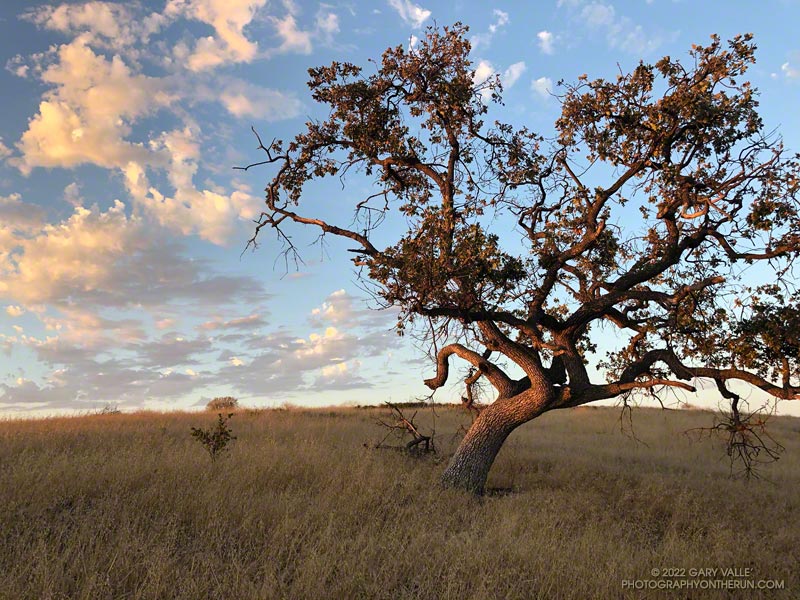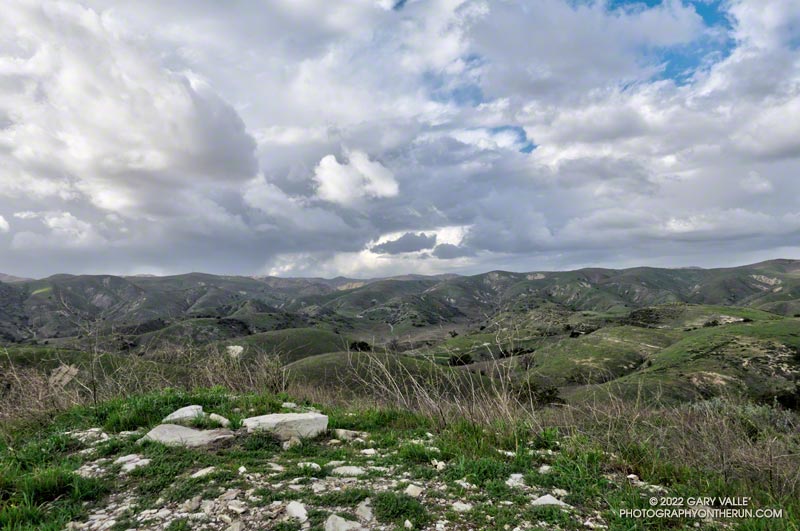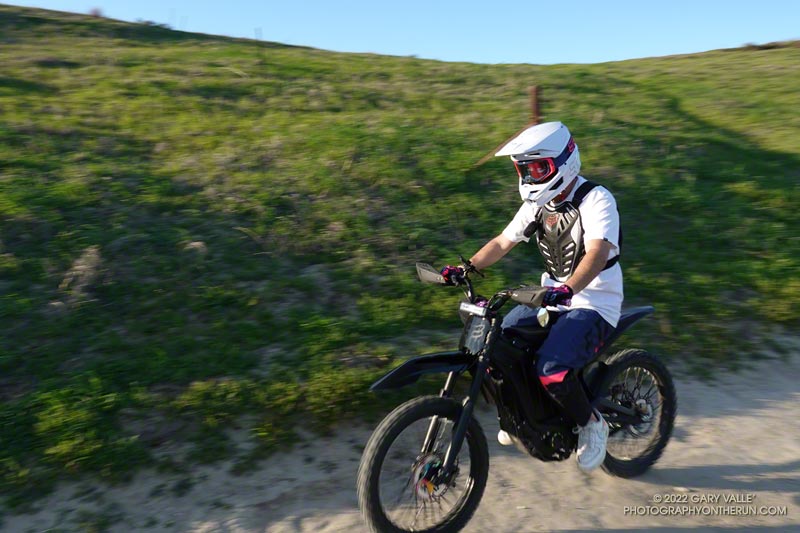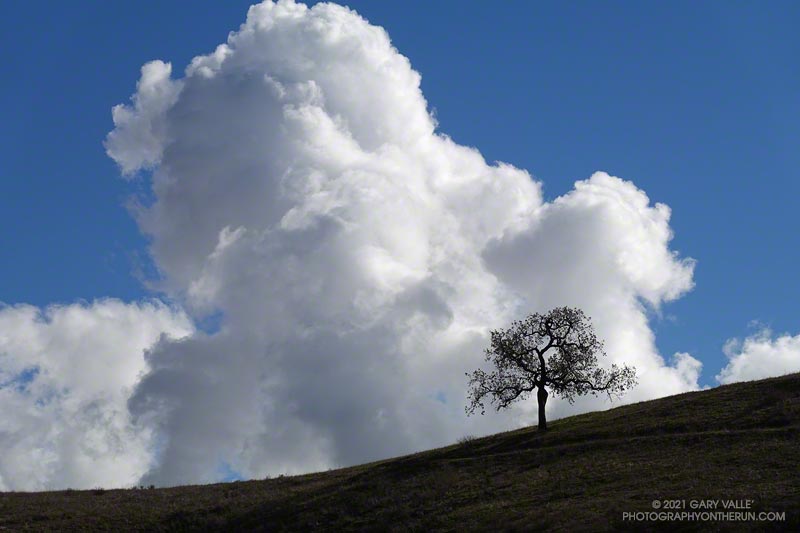
From a early morning run this week at Ahmanson Ranch.

From a early morning run this week at Ahmanson Ranch.

Revitalized by December’s copious rainfall and temperatures in the mid-80s in February, this valley oak at Ahmanson Ranch has produced a lush crown of new leaves.
(Officially named Upper Las Virgenes Canyon Open Space Preserve, most users refer to the open space area as Ahmanson Ranch, or simply, Ahmanson.)

Yep, that was a rumble of thunder. It was a blustery, Spring-like afternoon and a storm cell had developed a few miles to the WNW of Lasky Mesa.
Before driving over to Ahmanson I’d checked the weather radar and seen cells circulating counterclockwise around a cold upper level low. Most were dissipating as they moved north to south, out over the Valley. The wildcard was that the upper low was moving southward, and the cells might strengthen.

Again there was a low rumble. The cell didn’t seem any closer, but now I could see additional development to the north and northeast of Ahmanson. I picked up the pace.
There’s nothing like the threat and energy of a thunderstorm to incentivize a runner. All the way back to the trailhead it looked like heck might break loose at any moment.
But it didn’t. It was just starting to rain when I got back to the car, and on the way home the streets were wet. The Cheeseboro RAWS recorded 0.06 inch of rain, as did Downtown Los Angeles (USC).
Even though the Rain and Water Year rainfall totals for Los Angeles are about normal for the date, January and February have seen little rain. Precipitation records for Los Angeles indicate the period January 1 to February 28 will be the fourth driest on record.
The precipitation outlooks for Southern California this March don’t look especially promising, with a typical La Nina precipitation pattern expected for the West Coast.
Some related posts: Clearing Skies at Ahmanson Ranch, Thunderstorm

The photo above is of a rider on an e-dirt bike in Upper Las Virgenes Canyon Open Space Preserve (aka Ahmanson Ranch). Based on a sequence of photos, no pedaling was required.
With the explosion of e-bikes, encounters such as this are inevitable. I’ve seen e-bikes and tracks in the most remote corners of the local mountains. Earlier this year, while running on a wilderness trail, I was passed by a motorcade of ten e-bikes.
Poaching of trails is commonplace. In one bike forum the question was asked, “Has anyone here actually received a ticket for riding an e-bike on a trail?” At that time — 2018 — the consensus was a resounding no. More recent posts suggest that not much has changed.

A conspicuous valley oak on a hill to the south of East Las Virgenes Canyon Road/Trail, about a mile from the Victory Trailhead of Upper Las Virgenes Canyon Open Space Preserve (Ahmanson Ranch).

The cumulus cloud towered overhead, its size accentuated by a lone oak on the skyline. An extraordinary series of December rainstorms were finally over. The year 2021 would end with Downtown Los Angeles (USC) having recorded the third highest amount of December rainfall on record.
I was running from the Victory Trailhead of Upper Las Virgenes Canyon Open Space Preserve (aka Ahmanson) to Las Virgenes Canyon. With about 5 inches of rain in the area over the past two days, I was curious to see how upper Las Virgenes Creek was flowing.
Here are a few photos from the December 31st trail run and several other trail runs at Ahmanson over the past couple of wet weeks.